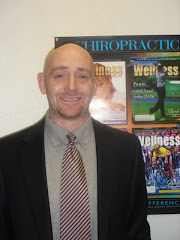
With abundant documentation, it is evidence that more people die in winter than any other season. It doesn’t seem to matter where people live. They can live in the colder northern states or in warmer climes.
This puzzle was presented at the International Congress of Biometeorology where a study was released claiming that people do not die because it is cold, but because it is winter. The study was presented by Robert E. Davis, a University of Virginia environmental scientist.
One theory is that winter mortality might be related to vitamin D deficiencies, from lack of sunlight. “It may be a contributing factor,” said Peter Hoeppe, an environmental scientist with Ludwigs-Maximilian University in Munich, Germany. Yet, Heoppe could not explain how vitamin D deficiency might kill at a specific time of year.
Biometeorology disciples have long considered winter to be a time full of aches, and pain, and blahs. But, Davis’ study of mortality rates has cast an even darker shadow on the season.
There are many factors to consider: the frigid cold and heart disease; climatic factors such as El Nino and resulting warmer weather and storms; wind chill and frostbite; and being indoors and passing on diseases.
Summarized from: PHILADELPHIA INQUIRER (Philadelphia, PA)
Dec. 22, 2002, n.p. © KNIGHT-RIDDER NEWSPAPERS. Distributed by KNIGHT-RIDDER/
This puzzle was presented at the International Congress of Biometeorology where a study was released claiming that people do not die because it is cold, but because it is winter. The study was presented by Robert E. Davis, a University of Virginia environmental scientist.
One theory is that winter mortality might be related to vitamin D deficiencies, from lack of sunlight. “It may be a contributing factor,” said Peter Hoeppe, an environmental scientist with Ludwigs-Maximilian University in Munich, Germany. Yet, Heoppe could not explain how vitamin D deficiency might kill at a specific time of year.
Biometeorology disciples have long considered winter to be a time full of aches, and pain, and blahs. But, Davis’ study of mortality rates has cast an even darker shadow on the season.
There are many factors to consider: the frigid cold and heart disease; climatic factors such as El Nino and resulting warmer weather and storms; wind chill and frostbite; and being indoors and passing on diseases.
Summarized from: PHILADELPHIA INQUIRER (Philadelphia, PA)
Dec. 22, 2002, n.p. © KNIGHT-RIDDER NEWSPAPERS. Distributed by KNIGHT-RIDDER/


